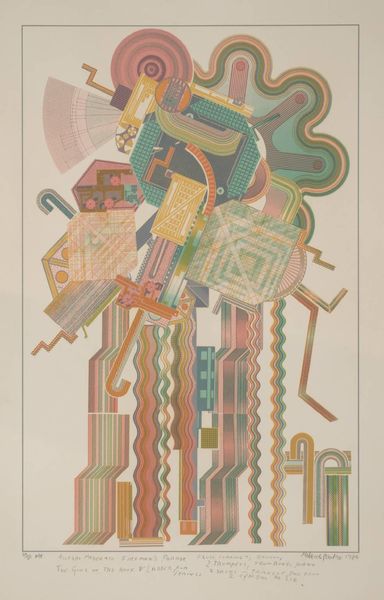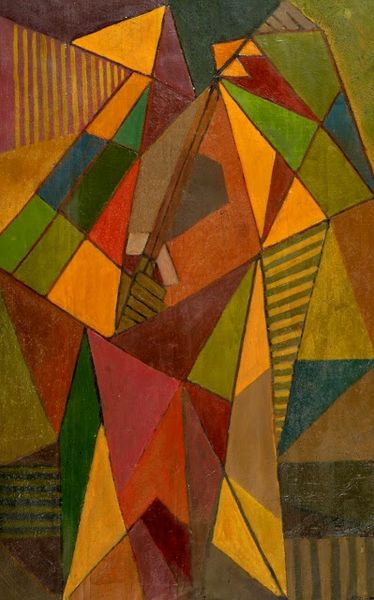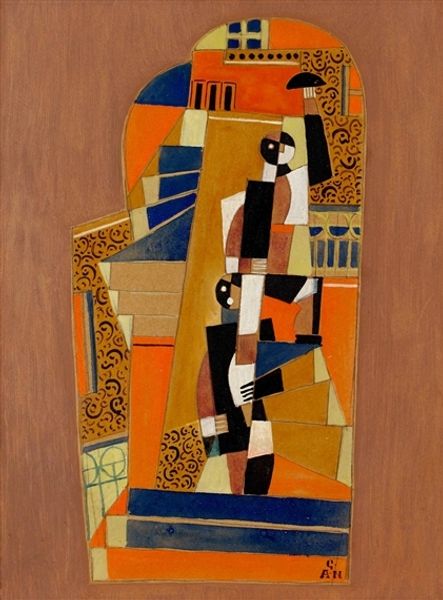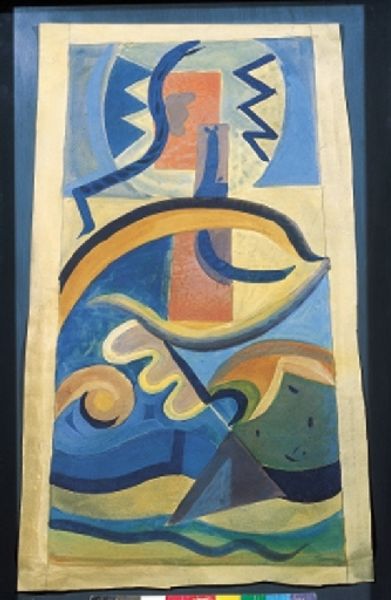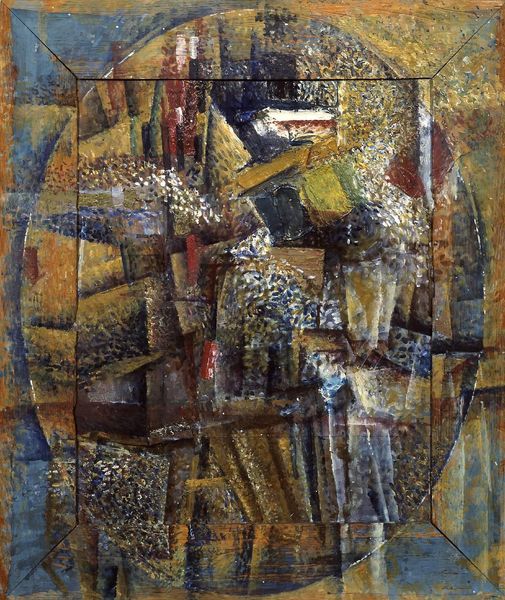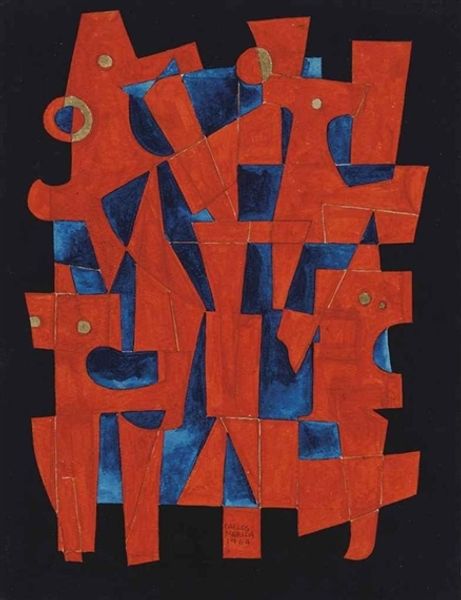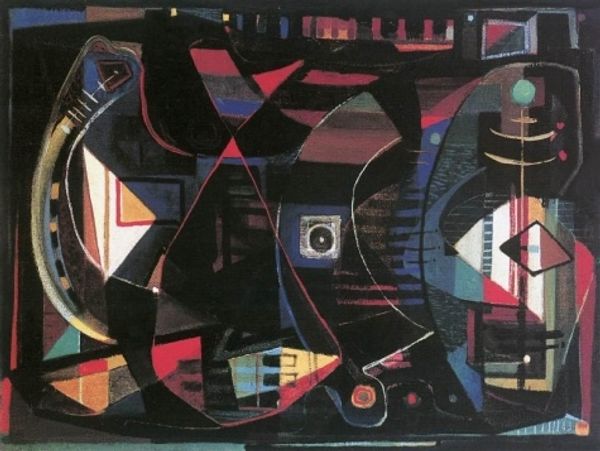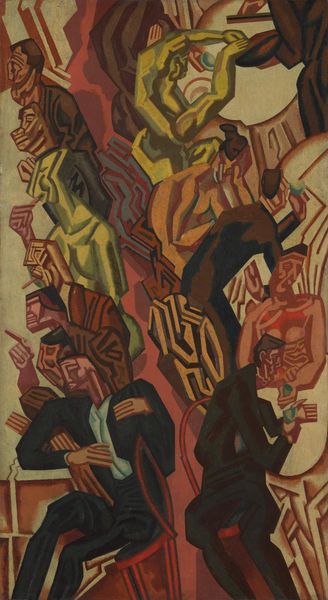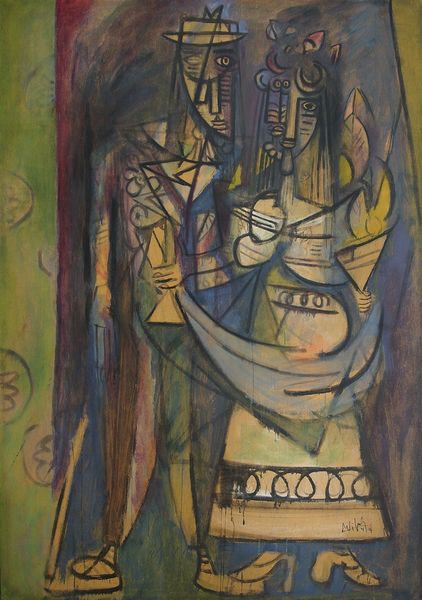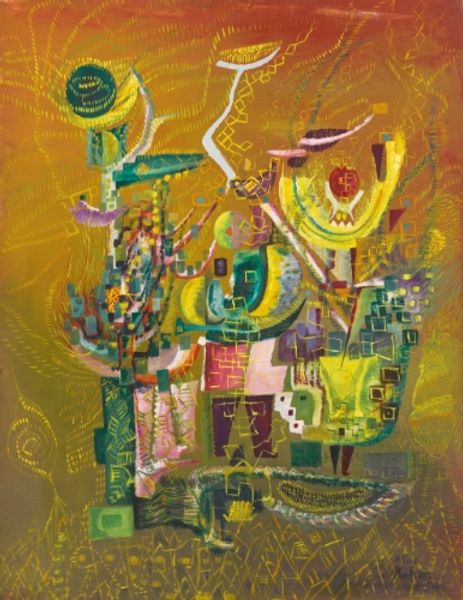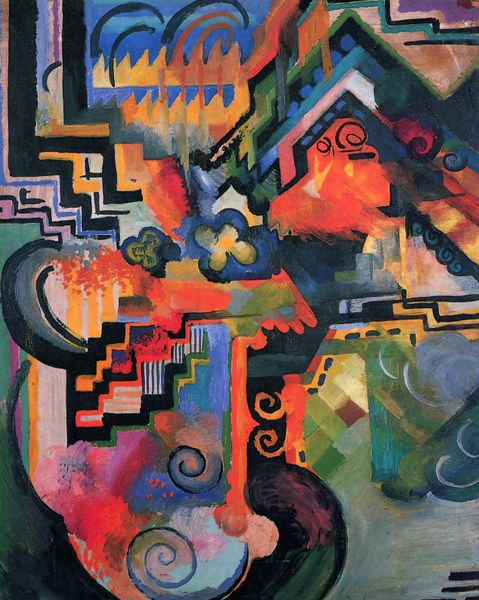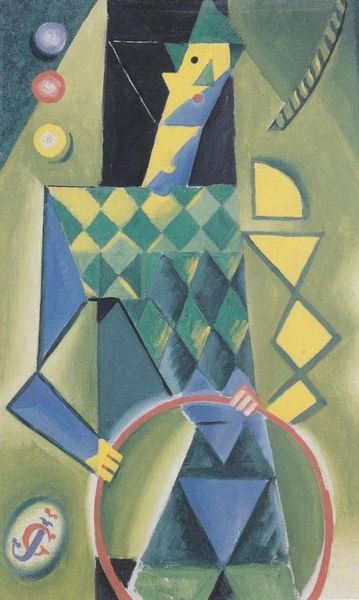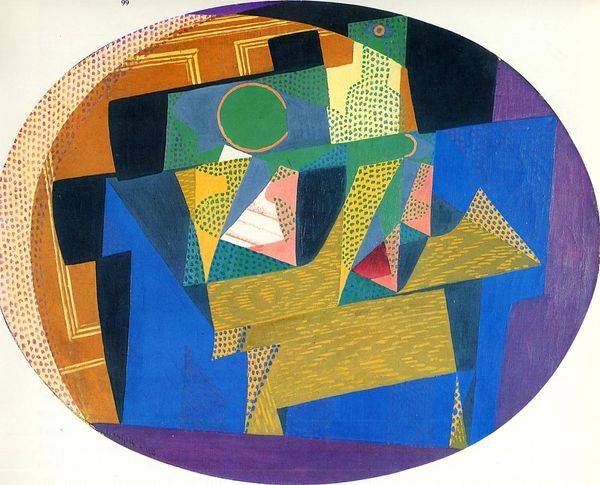
mixed-media, painting
#
abstract-expressionism
#
abstract expressionism
#
mixed-media
#
non-objective-art
#
painting
#
painted
#
form
#
acrylic on canvas
#
geometric-abstraction
Copyright: Wolfgang Paalen,Fair Use
Curator: Before us hangs Wolfgang Paalen’s "Messenger from the Three Poles," a mixed-media painting from 1949. Editor: Well, my immediate reaction is a kind of subdued grandeur. It feels... weighty. Look at how the colors are muted and earthy, almost mineral-like. And it seems quite deliberately crafted, a laborious construction. Curator: Laborious, yes, but think about what Paalen, a one-time surrealist, is attempting here. The "messenger" isn't literal; it’s about the psychological transit of primal forces, the meeting point of conscious and unconscious minds represented through these stark, almost totemic shapes. Consider the cross shapes. What traditions do you see influencing them? Editor: While those formal cross elements do present iconographic echoes across cultures, to me it is just formal pattern here, the careful overlaying of geometric forms in a kind of… well, architectural build-up really fascinates me. Paalen is working and reworking the painting's surface so that the structure has an internal, haptic solidity, rather than an ethereal float so prevalent in Surrealism. Look at the grid texture in the background; a conscious choice that echoes labor. Curator: Absolutely. And consider how Paalen invokes Indigenous cosmology – the three poles possibly alluding to shamanistic beliefs around cosmic axes. Notice how the upper section dominates the work, but appears as much like a mask as it does a vessel. Perhaps even an otherworldly body itself. This evokes something from very primal regions of experience, places held within memory, passed on symbolically across time. The messenger delivers information from an era before consciousness, perhaps. Editor: And you can really see Paalen engaging with the raw materiality of the paint itself here to manifest this vision. It is far from an automatic technique that defined surrealism. We could also talk about the socioeconomic factors possibly influencing his practice, how the postwar austerity forced artists to innovate with available resources. That subdued color palette might have more to do with constraints on certain pigments than deliberate aesthetic choices, even! Curator: An important perspective! Seeing the artist's constraints alongside the cultural ambition to express these deep human motifs gives us more appreciation for the painting. Editor: Yes, thinking about the painting as both material object and a complex carrier of cultural content gives us richer experience.
Comments
No comments
Be the first to comment and join the conversation on the ultimate creative platform.
